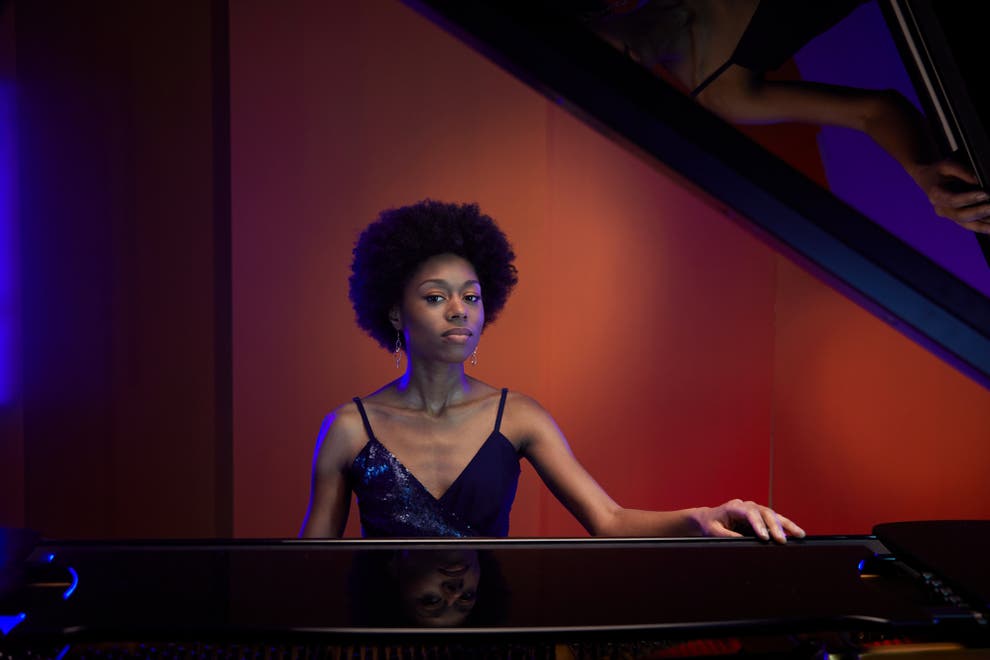Kanneh-Mason brings daring Clara Schumann concerto to the BSO

Pianist Isata Kanneh-Mason performed with the Baltimore Symphony Orchestra Thursday night. Photo: Decca Classics/John Davis
It was a double debut at the Baltimore Symphony Orchestra. Isata Kanneh-Mason made her first appearance with the ensemble Thursday night in Meyerhoff Symphony Hall. The young British pianist was also the first to take the solo part of Clara Schumann’s Piano Concerto in the organization’s history. German conductor Christoph König, a periodic guest, returned to the BSO podium to round out a program of Austro-Germanic music.
Sadly, the program will not be repeated. The BSO canceled its second performance, scheduled for Sunday afternoon in the Music Center at Strathmore, due to unresolved labor negotiations between Strathmore and IATSE Local 868, the union that represents Strathmore’s Ticket Office employees. The BSO has announced it will not perform at Strathmore for the remainder of 2021.
Kanneh-Mason is one of seven children in a musical family launched to stardom by the television show Britain’s Got Talent in 2015. She used her new recording deal with Decca to mark the 200th anniversary of Clara Wieck Schumann’s birth with a debut disc devoted to the composer in 2019. As she demonstrated there and in this concert, this concerto should be programmed by more orchestras.
Clara Wieck began the piece when she was just 14 years old. The teenage virtuoso revised it, adding two more movements in the completed version she herself premiered as soloist two years later, with Felix Mendelssohn conducting the Leipzig Gewandhaus Orchestra. Kanneh-Mason ably negotiated the solo part’s many daunting technical challenges in the first and third movements, with accurately placed octaves and whimsical Chopinesque fantasy.
König was an excellent accompanist, crafting the orchestral volume to the sometimes demure tone of his soloist and calibrating the tempo to keep the ensemble sound coherent. Wieck turned the second movement into a chamber music moment, and here Kanneh-Mason truly excelled, drawing out the poignant extended keyboard solo with exquisite rubato hesitations, taken up in dialogue eventually by principal cellist Dariusz Skoraczewski.
After this emotionally vulnerable moment, the boisterous finale rocketed the listener back into the home key of A minor. Ranging from agitated thunder to delicate runs and bel canto flourishes, Kanneh-Mason channeled the alternating fury and tender recollections of the second movement. Strong ovations sadly did not earn an encore from the soloist.
Any guest conductor appearing with the BSO in the next three years might be under consideration to succeed Marin Alsop as music director. König already seems to enjoy a collegial rapport with the musicians, and his innate musicality and precision came through in two strong interpretations of opposite ends of the symphonic spectrum. Where Dalia Stasevska went for visceral excitement earlier this season, König was inclined toward refinement.
This worked superlatively in Haydn’s Symphony No. 59 (“Fire”), with a suavely shaped first movement, poised and smooth in spite of its fleet Presto tempo. The selection of about forty string players, which was just right for orchestral balance in the Schumann concerto, overwhelmed the continuo fortepiano of Lura Johnson, placed directly in front of the podium. The horns bloomed sweetly in the tutti surprise of the second movement. The highlight of the third movement was the slithering violin parts in the Trio, so soft on the repeat that one could almost make out the tinkle of the fortepiano.
It is hard to make an early Haydn symphony sound so effortlessly graceful, and König helped the musicians render this pleasing work with both speed and balance. The finale was an effervescent delight, the two horns popping out of the texture with rhythmic vitality. (The symphony’s moniker comes from Haydn’s re-use of some of its movements to accompany a play called Die Feuerbrunst, or The Conflagration.)
Richard Strauss’s tone poem Also sprach Zarathustra gave König an even larger palette to work with. The trumpets nailed the famous opening of the piece, a depiction of an Alpine sunrise now more strongly associated with the film 2001: A Space Odyssey. Here Lura Johnson could definitely be heard, making a mark on the important organ part with the electronic sound from an Allen organ.
The piece is a workout for all sections of the orchestra, and König drew them all into the best light: the warm solo string ensemble in the hymn-like music of the second section, the wildly chattering woodwinds, and the apocalyptic brass. The chromatic fugue of the “Von der Wissenschaft” movement has rarely sounded so clinical, from the first sounding of the subject on the almost soundless basses, with their extensions down to low B.
Concertmaster Jonathan Carney brought both rustic verve and salon polish to the wide-ranging violin solos in the “Tanzlied” section, and the clanging midnight chimes set a prophetic tone for the “Nachtwandlerlied” conclusion. The unresolved tension of the closing bars, where the orchestra went back and forth between the B major and C major tonal centers that run throughout the work, was so intense that the audience held back from applauding for a long time, as if waiting for an answer that never came.
Gemma New takes the BSO podium November 11 and 13 for a program of Mendelssohn’s Hebrides Overture, Debussy’s La Mer, and Kevin Puts’ The Brightness of Light, with soprano Renée Fleming. bsomusic.org

